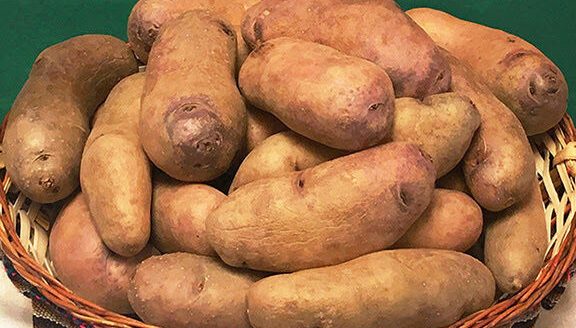Perhaps you know of a few quirky relatives who enjoy starting a ruckus or family debate during holiday feasts? Rather than cringe, embrace the diversity they bring to the table. In fact, extend that same appreciation to some of the food on your table, for there’s an untamed relative of those plated potatoes and cranberries that’s key to keeping our crops healthy, productive and available for purchase.
Now, for the first time, there’s an 1,100-plus-page book offering everything you could want to know about these so-called “crop wild relatives,” which call our region of the world home and serve as wellsprings of genetic diversity. Volume one of two of the new book, titled North American Crop Wild Relatives, was published by Springer Publishing. It provides an overview of more than 600 useful wild plants native to the United States, Canada and Mexico. It also outlines strategies for the plants’ care so that they’ll be available to future generations.
Hardback copy is scheduled for release in a few weeks followed by the online version of the second volume in mid-January, notes Stephanie Greene, a plant geneticist with the Agricultural Research Service in Fort Collins, Colorado.
Greene is one of 23 total ARS researchers from Colorado, Iowa, Georgia, Maryland, Texas, Washington and other states who contributed to this landmark book together with 50 other subject-matter experts from around the world. As the ancestors and wild cousins of our economically important plants, CWR offer a rich source of genetic diversity that can be tapped for uses critically important to farmers—from resistance to emerging diseases and pests, to increased yield and better tolerance to prolonged drought and soil salinity. They can also be of great value to consumers—bringing better nutritional quality and more varied tastes and colors to the dinner table.
Crop wild relatives can be found persisting on mountains and across deserts, on roadsides and even in vacant lots. However, “as useful and resilient as these plants are, they aren’t well represented in public seedbanks and other conservation repositories where they will be protected into the future and available to plant breeders,” notes Colin Khoury, an ARS contributing author. To make matters worse, the natural populations of these plants are vulnerable as their habitats are developed for land use, invasive species establish themselves, and temperature and rainfall patterns change. These threats underscore the importance of conservation action, adds Khoury, who along with Greene, is at the ARS National Laboratory for Genetic Resources Preservation in Fort Collins.
North American Crop Wild Relatives is a three-year effort that aims to capture best-management practices for not only collecting CWR but also conserving them. Spanning 30 chapters, the book also provides readers with leading-edge information about certain plants, their conservation status, availability in seedbanks or botanical gardens, and real and potential value to humankind—agriculturally, medicinally, culturally or otherwise. At least 17 globally important crops have benefitted significantly from traits coming from North American CWR. For example, European grape varieties today withstand a deadly pest called Phylloxera thanks to North American wild grape rootstocks.
“This effort shows how agricultural research, land management, botanic gardens, and other organizations and institutions from multiple countries can organize around our mutual interests in conserving wild relatives and making them available for breeders and other uses,” says Greene. “We hope this book will also be a catalyst for greater public awareness of the value of CWR and the threats to their natural habitats.”



